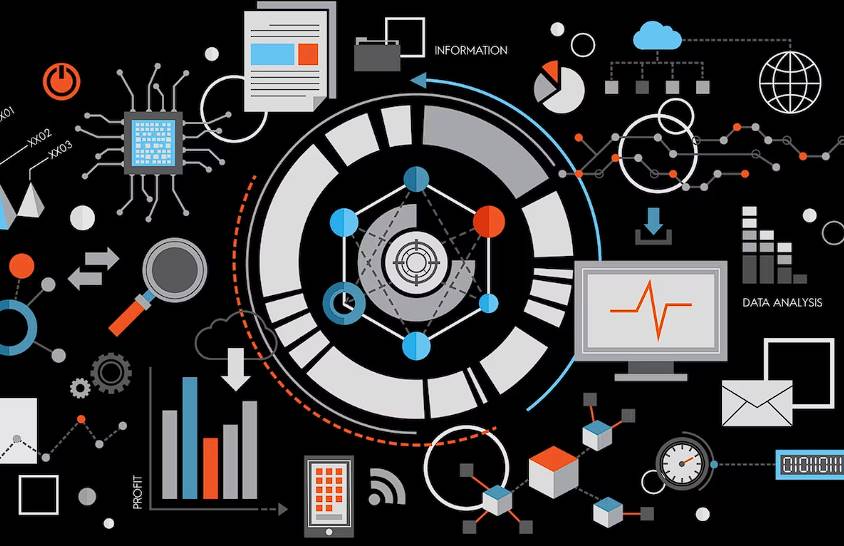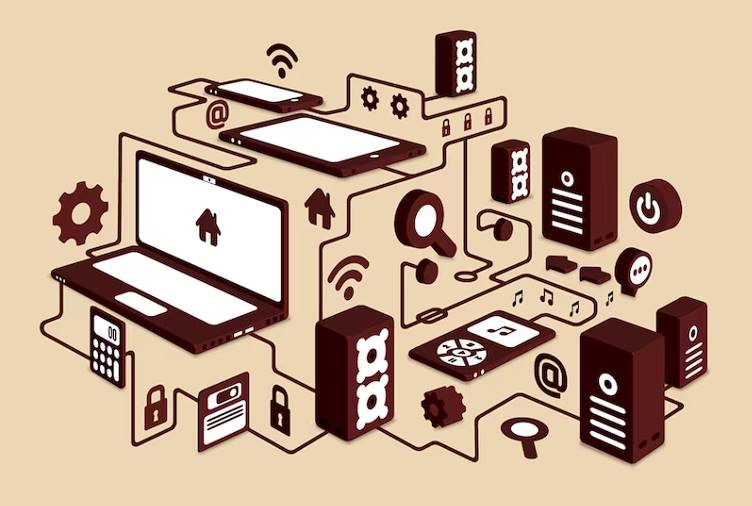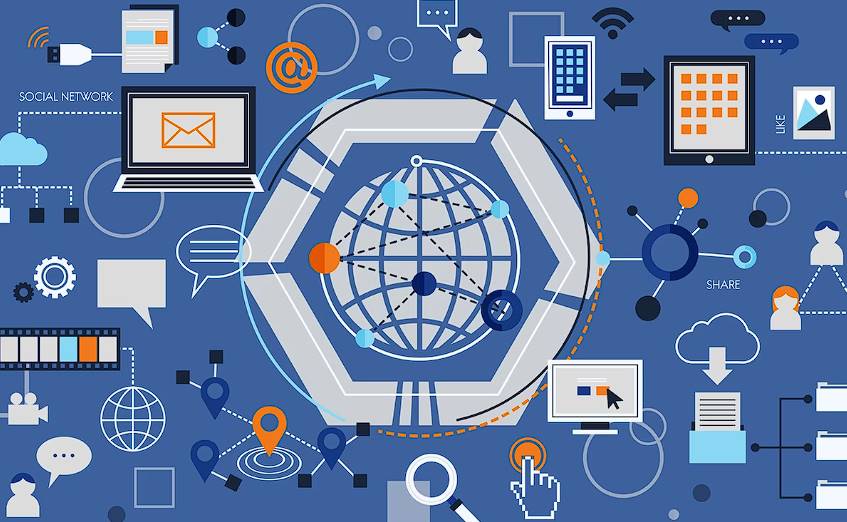The attention typically falls on cutting-edge technological developments, cybersecurity policies, and market trends as companies race to keep up in the digital transformation era. However, IT Asset Management (ITAM) is a crucial component of every successful business that often goes overlooked.
Maintaining an accurate IT Asset Management system is crucial for contemporary businesses to run smoothly, safely, and cost-effectively. Imagine a symphony orchestra where precise tuning, synchronisation, and accounting for each instrument are essential to creating beautiful music, just as precisely organised hardware and software, data repositories, and network infrastructure are essential for achieving the desired results in IT.
This article will take you on a tour through the digital halls of modern corporations as we examine the significance of precise ITAM in preserving any enterprise's reliability, safety, and adaptability.
As we go on, we'll see why careful asset management isn't just a good idea but crucial for every company in today's technology-driven economy and how it can help them succeed. Come along as we show you how this often-overlooked subject, IT Asset Management, can take your company to new heights using the power of accuracy.
Let's Define The Term IT Asset
A company's information, software, and hardware are all considered IT assets when running a business. Hardware assets are the actual computers, servers, mobile devices, laptops, keyboards, and printers that an organisation owns.
Open-source software systems and databases are also considered software assets, as are programs for which licences are generally provided per user or machine. Cloud-based software assets, like SaaS programs, are also considered software assets.
What Is Meant by IT Asset Inventory?
Taking an IT asset inventory involves cataloguing and maintaining all the computer gear and software a company has. A company's IT infrastructure consists of its servers, laptops, mobile devices, printers, network devices, software licences, and anything else that uses or relies on technology.
It is important to remember that the scope of IT asset inventory goes much beyond the mere identification of IT assets and includes their complete lifecycle management, from acquisition through retirement.
The primary objective is maintaining an accurate and complete inventory of all IT assets. IT asset management (ITAM) relies on this documentation, which helps businesses save money by preventing wasteful spending on things like unused devices, duplicate software licences, and unneeded repairs.
Different Categories of Information Technology Assets
All IT assets that potentially affect service provisioning should be recorded. Many businesses have difficulty locating this asset data and keeping it current. Keeping that in mind, the following are a few categories of IT resources that might significantly improve the quality of service provided.
IT Hardware
Hardware is all the gadgets and machines you use to do things like input, output, storage, communication, processing, and more. The hardware of a computer can either be external or inside. The motherboard, hard drive, and RAM are internal hardware devices, whereas the monitor, keyboard, printer, and scanner are all external hardware devices.
Software
For computers to function and carry out specific activities, they require software consisting of these instructions, data, and programs. Software deals with the mental parts of a computer, as opposed to the physical hardware. The term "software" refers to any executable code on a computer or mobile device. It's the computer's mutable component instead of the fixed hardware.
Application software and system software are the two primary types of computer programs. An application is a programme developed for a particular purpose. The computer couldn't function without the system software upon which all other programs are based.
Cloud Services
Cloud services encompass a broad category of Internet-based services given on demand by providers to their clients and clientele. These services eliminate the need for costly and complicated in-house server gear and software by making various valuable programs and data readily available online. Whether they realise it or not, most workers rely on cloud services daily. These services may be used for anything from checking email to working on papers.
Cloud and computing service providers oversee all aspects of providing cloud services. It is unnecessary for a business to host apps on its servers because they are made available to clients via the providers' servers.
Software as a Service (SaaS)
SaaS, "software as a service," is a model for delivering applications via the Internet. Instead of buying software outright and setting it up on their computers, SaaS consumers pay a monthly fee to access the service. Customers may use the software from any Internet-connected device, including computers. The users never have to deal with the remote servers hosting the software.
Digital Information
Computers, displays, calculators, communication devices, and so on all contribute to creating digital information, which may be saved locally or on the cloud. Electronic digital storage, reading, copying, editing, and movement became the norm around the turn of the 21st century.
Virtual Machines
These days, a company can only have a few virtual computers. They mimic the behaviour of traditional computers while being completely independent of the host system. A virtual machine might have superior capabilities to the host computer.
Malware also has minimal possibility of successfully penetrating a virtual system. The computer can power down in response to a virus detection. As a result of these factors, virtual machines have rapidly gained acceptance among IT departments.
What Happens if IT Assets are Poorly Managed?
When it comes to Information Technology, complexity is the enemy. Companies that don't manage their IT assets tend to have a more complex IT infrastructure. These businesses do not have a complete picture of their IT resources.
Inadequate IT inventory management leads to the following issues:
Not Knowing What IT Resources You Have
Auditing information technology entails checking over a business's digital assets and systems. An IT audit aims to evaluate the quality of an organisation's IT management by searching for signs of inefficiency or inaccuracy. Modern businesses routinely subject them to audits to keep their IT systems safe from harm.
One of the most common issues with IT audits is a need for more data regarding IT assets. Businesses that don't keep detailed records of their IT assets have inefficient and difficult-to-navigate networks. An efficient IT asset management approach gives businesses command and metrics over their IT infrastructure. Improved IT controls and the identification of IT risks and threats are made possible by effective IT asset/inventory management.
Duplicate Software Needing to Be Bought Again and Again in IT
One of the significant challenges for large, multi-center, or acquired businesses is the recurrence of IT acquisitions. When a business repeatedly invests in IT that it already possesses, even if it serves no operational use, this is known as a recurrent IT purchase. It's dubbed a "duplicate app" when two or more apps do the same thing. One source of wasteful spending in IT is duplicative software.
Companies with the above characteristics face a significant threat from duplicate apps if they do not have an IT inventory management procedure where data is gathered in a central location. Due to a lack of information, these businesses cannot identify instances of application duplication. With IT asset management, businesses have complete visibility into app-related data, including licence information.
Loss of Tracking ROI on IT Spending
At the close of the twentieth century, digitalisation emerged as a significant trend. The prevalence of digital technologies in both personal and professional settings is growing. Businesses have invested in IT to digitise and automate formerly manual operations. These expenditures will primarily contribute to the company's bottom line and expansion plans. If the effectiveness of these IT expenditures cannot be assessed, how can they be made?
With IT asset management, businesses may evaluate the value of their IT spending. IT asset management allows for tracking IT investment expenses and user counts at the departmental level. IT asset management systems also reveal the evolution of a technology expenditure over time.
Misplacement of Digital Property
Companies face a serious issue when their IT assets are lost. Businesses must make new investments to replace these items. The loss of IT assets may seem like a minor issue initially, but if the situation spirals out of hand, it might lead to far more serious issues.
Nonexistent Information Technology Resources
Uninformed IT assets, or "ghosts," were acquired in the past but aren't being used. It is common for this to occur after an employee has completed the company's offboarding procedure. Employee property and liabilities must be collected as part of the offboarding procedure. If the corporation is unaware of these assets, it will continue to pay the annual licence fees associated with them.
Using an efficient IT asset management strategy, it is feasible to discover Ghost IT assets. Information on a company's assets is easily accessible to those practising IT asset management. Therefore, the dangers associated with Ghost IT assets may be sidestepped.
Failure to Control the Licencing Process
Companies incur expenses whenever they acquire anything new. Some of the things that businesses buy are licences. Businesses must annually renew or maintain their licences for licenced purchases by paying a charge. Which business would be ready to pay annual licence or maintenance fees for something it doesn't even plan to use?
Licence management is an integral element of IT asset management and should be performed by all businesses. Businesses may save money by cancelling unused licences and never miss a renewal date again with the help of an efficient licence management system. Effective licence management may save businesses 10% annually on IT expenses.
What Are the Significance and Benefits of an Accurate It Inventory?
Any business that depends heavily on technology to function should keep its IT asset inventory current. To state the obvious, it's hard to think of modern sectors that don't rely on technology in some way, shape, or form.
Therefore, there are several advantages to maintaining an accurate inventory of IT assets.
Minimising Expenditures
Gaining an overview of all IT assets allows businesses to cut hardware, software, and upkeep costs. The data can prevent money from being wasted on things like duplicate licences and unused equipment.
Compliance
Organisations can better prepare for audits, comply with regulations, and avoid fines for noncompliance if they have an accurate inventory regularly updated.
Maximised Use of Resources
Businesses may gain insight into asset utilisation and utilisation rates. With this information, they may pinpoint areas for improvement in asset utilisation, such as where server consolidation or the reallocation of unwanted licences would be possible.
Improved Safety
Organisations can take the necessary steps to reduce vulnerabilities caused by unpatched software or unauthorised devices by conducting an IT asset inventory.
Better Ability to Make Choices
A thorough accounting of IT assets can yield valuable metrics for making well-considered choices. Organisations may make informed decisions about the retirement of assets, upgrades to equipment, and software licence purchases, for instance, by analysing utilisation statistics.
Conclusion
IT Asset Management (ITAM) is a crucial component of modern businesses that helps them run smoothly, safely, and cost-effectively. It involves cataloguing and maintaining all computer gear and software a company has, including servers, laptops, mobile devices, printers, network devices, software licenses, and anything else that relies on technology.
The primary objective is maintaining an accurate and complete inventory of all IT assets, which helps businesses save money by preventing wasteful spending on unused devices, duplicate software licenses, and unneeded repairs.
There are several categories of IT assets that can significantly improve the quality of service provided. Hardware assets include computers, servers, mobile devices, laptops, keyboards, printers, monitors, keyboards, printers, and scanners. Software assets include instructions, data, and programs, and are mutable components of a computer.
Cloud services offer internet-based services that eliminate the need for costly in-house server gear and software by making valuable programs and data available online. Software as a Service (SaaS) is a model for delivering applications via the Internet, allowing customers to access the software from any Internet-connected device, including computers.
Digital information includes computers, displays, calculators, communication devices, and virtual machines. Virtual machines mimic the behavior of traditional computers while being completely independent of the host system, with superior capabilities and minimal malware penetration.
IT asset management is crucial for businesses to maintain a comprehensive understanding of their IT resources. Inadequate inventory management can lead to several issues, such as not knowing what IT resources exist, recurrent IT acquisitions, loss of tracking ROI on IT spending, misplacement of digital property, nonexistent information technology resources, and failure to control the licensing process.
Auditing information technology helps evaluate the quality of an organization's IT management by searching for signs of inefficiency or inaccuracy. An efficient IT asset management approach provides businesses with command and metrics over their IT infrastructure, improving IT controls and identifying risks and threats. It also allows for the identification of duplicate apps and recurrent IT purchases, reducing wasteful spending.
Licence management is an integral part of IT asset management, allowing businesses to cancel unused licenses and avoid missed renewal dates. Effective licence management can save businesses 10% annually on IT expenses.
Maintaining an accurate IT asset inventory can help businesses minimize expenses, comply with regulations, maximize resource use, improve safety, and make informed decisions.
By keeping track of asset utilization and usage rates, businesses can identify areas for improvement and reduce vulnerabilities caused by unpatched software or unauthorised devices. Overall, effective IT asset management is essential for businesses to ensure their IT infrastructure is secure and efficient.
Content Summary
- IT Asset Management (ITAM) is often overlooked but crucial for business success.
- Precise ITAM is essential for smooth, safe, and cost-effective operations.
- Accurate ITAM is like tuning an orchestra for beautiful music in the digital world.
- ITAM ensures reliability, safety, and adaptability in modern corporations.
- IT Asset includes information, software, and hardware in business operations.
- Hardware assets encompass computers, servers, mobile devices, and more.
- Software assets include open-source, licensed, and cloud-based software.
- IT Asset Inventory involves cataloguing all computer gear and software.
- IT Asset Inventory goes beyond identification, covering lifecycle management.
- Accurate inventory saves money by preventing wasteful spending.
- IT Hardware includes internal and external devices for various functions.
- Software comprises executable code and instructions for computer operations.
- Cloud Services provide online access to valuable programs and data.
- SaaS (Software as a Service) offers software access via the Internet.
- Digital Information encompasses various electronic data storage and processing.
- Virtual Machines offer independent and secure computing environments.
- Poorly managed IT assets result in complex IT infrastructure.
- Inefficient IT asset management leads to a lack of visibility.
- IT audits reveal inefficiencies and security risks in IT systems.
- Duplicate software purchases are a result of poor asset management.
- IT asset management provides visibility into duplicate applications.
- Tracking ROI on IT spending is essential for business growth.
- IT asset management helps evaluate the value of IT investments.
- Misplaced IT assets lead to unnecessary replacements and costs.
- Ghost IT assets can be discovered and managed through ITAM.
- Efficient licence management saves businesses money.
- Accurate IT inventory minimises hardware, software, and upkeep costs.
- Compliance with regulations is easier with an accurate IT inventory.
- Maximised use of resources can be achieved with IT asset insights.
- IT asset inventory improves security by identifying vulnerabilities.
- Informed decisions are made possible through comprehensive IT asset data.
- Accurate inventory leads to well-considered retirement and upgrades.
- Modern businesses rely heavily on technology for various sectors.
- Accurate IT inventory minimises unnecessary expenditures.
- Compliance with regulations helps avoid fines and audits.
- Maximising resource use is facilitated by IT asset insights.
- Improved security results from regular IT asset inventory checks.
- Informed choices are made possible through comprehensive IT asset data.
- IT asset management enhances efficiency and cost-effectiveness.
- Precise ITAM is like a conductor leading an orchestra of technology.
- IT assets encompass hardware, software, and digital information.
- Inventory management goes beyond identification to full lifecycle tracking.
- Accurate inventory prevents wasteful spending on IT resources.
- IT hardware includes internal and external devices for various functions.
- Software consists of executable code and instructions for computers.
- Cloud services provide online access to valuable programs and data.
- SaaS offers software access via the Internet, eliminating physical installations.
- Digital information encompasses various electronic data storage and processing methods.
- Virtual machines provide secure and independent computing environments.
- Effective IT asset management is essential for streamlined operations and cost savings.
Frequently Asked Questions
Maintaining IT assets is crucial for several reasons. It helps organisations optimise their technology investments, enhance cybersecurity, ensure regulatory compliance, and improve operational efficiency. Proper maintenance ensures that IT assets perform optimally and have a longer lifespan.
The frequency of IT asset audits depends on the size and complexity of your organisation. Many businesses conduct annual audits as a best practice, but larger enterprises may benefit from more frequent audits, such as quarterly or semi-annually.
Poor IT asset management can lead to security risks such as unpatched vulnerabilities, unauthorised access to sensitive data, and the inability to track or respond to security incidents effectively. It can also result in non-compliance with data protection regulations.
Responsible IT asset disposal, including recycling and proper disposal of electronic waste (e-waste), reduces the environmental impact of IT asset management. It helps prevent electronic waste from ending up in landfills and promotes recycling of valuable materials.
Neglecting IT asset maintenance can result in increased downtime, decreased productivity, higher repair and replacement costs, security vulnerabilities, and regulatory compliance issues. It can also strain IT budgets due to unexpected expenses.


